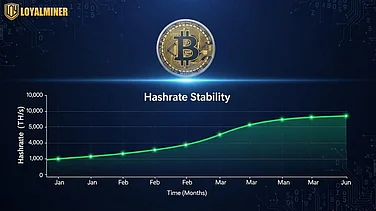Stablecoins occupy a point where stability and innovation converge in the world of finance. As other cryptos' values go up and down wildly, stablecoins are made to be stable, usually pegged on a fiat currency like the US dollar. Stablecoins' stability is critical for trade, remittances, payment, and bridging decentralized finance (DeFi) and mainstream markets.
Its secret reserves. Without reserves, the whole basis for a stablecoin would be destroyed, since there can never be any guarantee that one digital token is as valuable as it purported to be. To actually comprehend how stablecoins work, it is imperative to understand how reserves function, what kind of reserves are used, the advantages and disadvantages of each system, and why controversy over reserves continues to determine the destiny of digital currencies.
The Emergence of Reserves within Stablecoin Mechanisms
Stabilizing money using reserves is not a new process. Instead, it's a coming back to ancient traditions. National money was reserve-backed in silver or gold, and circulating money that was redeemable for a certain amount of metal for centuries. Fiat money developed from commodity backing through the course of time, though the logic of reserves was present in financial systems. Stablecoins are actually reintroducing this concept in the modern world.
With the introduction of the first fiat-backed stablecoins like Tether (USDT), all of them shared one basic structure: a single digital token against a single US dollar of reserve. It then expanded into different forms of reserves—commodmodities, crypto-assets, algorithmic constructs, and hybrid combinations—and each of them tried stabilizing stablecoin and making it more effective.
Fiat-Collateralized Reserves: The Traditional Backbone
Fiat reserve is the most straightforward and pervasive paradigm. Under this paradigm, stablecoins are 1:1 fiat collateralized, i.e., the coins minted are directly collateralized by an equivalent unit of cash in custodial wallets. If an issuer of stablecoin mints 500 million tokens, then it must keep 500 million dollars (or equivalent funds) in reserve.
This model leaves clients with the simplest redemption model. In theory, if you have one dollar-backed stablecoin, you can redeem one dollar from the issuer. Stablecoins like USDC, Tether, and TrueUSD are backed by fiat reserves mainly.
This model, nonetheless, is defined by centralization. Companies run the reserves instead of decentralized protocols, therefore the users need to be able to trust such issuers. Transparency concerns tend to give rise to queries like: Are reserves cash or to some extent invested in commercial paper, bonds, or other assets that are less liquid? These forms of concerns have made regulation easier, highlighting how stablecoin operation is being launched by fiat-collateralized reserves but as well as accountability concerns.
Commodity-Collateralized Reserves: Hard Asset Anchors
Other stablecoins are backed against commodities like gold, silver, or oil. A gold-backed stablecoin, for example, might be a unit of claim on a gram of gold held in a certified depository. This gives investors the assurance of owning a digital asset secured by a physical, verified store of value.
Commodity reserves diversify the stablecoin ecosystem and introduce users that are skeptical about fiat currency because of inflation or political instability. They also bring blockchain into the mainstream as it aligns with regular assets, making commodities more liquid and accessible.
But they face operating challenges. Physical commodities are stored, secured, and audited, usually in countries that are foreign to each other. Redemption is usually laborious; exporting gold is not the same as exporting cash. Therefore, commodity reserves are specialized but substantial, particularly for those who consider stablecoin operations a means of bridging traditional ideas of wealth with new blockchain efficiency.
Crypto-Collateralized Reserves: Decentralized Stability
In the spirit of decentralization, some stablecoins are over-collateralized with crypto reserves. Rather than fiat or physical assets, users deposit cryptocurrency such as Ether as collateral. Fluctuating, cryptocurrencies, such reserves are over-collateralized. A user would deposit $150 in Ether to produce $100 in stablecoins.
Such systems as DAI, operated by MakerDAO, are based on this model. Smart contracts manage collateral ratios, which liquidate the positions as soon as collateral value is determined to be too low. This is aimed at keeping the system solvent and the peg stable.
The advantage of crypto reserves is that they're transparent—reserves are on-chain transparent, in contrast to fiat reserves in a bank. They are highly vulnerable to market crashes, though. If the collateral declines in value overnight, there can be a chain of liquidations, destabilizing the peg. Algorithmic reserves therefore have the potential and danger of decentralized stablecoin operation.
The most aggressive method is algorithmic reserves. The stablecoins of this kind strive to stabilize without collateral but instead provide manipulation of supply with automation. When demand is high and price is above the peg, the protocol issues new currency to lower the price. Coins are burned when demand is low to cause scarcity.
Technically, it is an algorithmic control system. In practice, algorithmic reserves have been prone to failure. The most useful example is the 2022 collapse of TerraUSD (UST). After confidence had been lost, the algorithm could not stem the decline, and trillions of value were destroyed.
In spite of all of the above, algorithmic reserves are a development and research area. Eventually, with personalization, they could build capital-efficient stablecoins without needing to employ much collateral. But in the meantime, they are a high-risk frontier of stablecoins.
Hybrid and Mixed Reserves: Balancing Stability
All actual projects are a mix of more than one model. Hybrid reserves mix fiat, commodities, crypto, and algorithmic models to reduce risk. A stablecoin, for example, would have fiat reserves to be exchanged for cash in an instant, crypto reserves to keep things decentralized and transparent, and algorithmic control to manage supply.
This diversification is a means of developing resilience so that failure at one point does not destabilize. Hybrid reserves must also be governed more sophisticatedly and if users even have any notion what they are carrying. As stablecoin use continues to evolve, hybrids will become more prevalent as issuers experiment with combining the good of various systems.
Beyond Collateral: Transparency and Trust
Reserves only exist to the extent to which people think they exist. For this reason, transparency and auditing are the backbone of stablecoin operations. Issuers supported by fiat will be subject to regular attestations or audits. Commodity-backed projects have to demonstrate physical asset presence. Crypto-backed stablecoins offer on-chain transparency but rely on open liquidation protocols. Algorithmic reserves have to demonstrate that they can absorb the shock.
Controversies arise each time there is a lack of transparency. Tether, for instance, has been repeatedly criticized for failing to publish periodic independent audits of its reserves. USDC, however, has promised to be more transparent through regular attestation. These are differences from the other corners only that show the significance of transparency in the validity of stablecoin reserves.
Risks in Reserve Management
All forms of reserve are risky. Fiat reserves are at risk of interference by the banking system or by regulation authorities. Commodity reserves are at risk of logistics and jurisdiction. Crypto reserves are at risk of users in liquidation in unstable markets. Algorithmic reserves are very much psychology-dependent and collapse when trust is broken. Hybrid reserves diversify risks but are complicated.
Liquidity too is an issue. Reserves can be there, but they need to be there when things get stressful. A redemption run can shatter the peg if the majority of the reserve is in illiquid collateral. The world discovered that in 2008, and stablecoin issuers have to learn it as well.
Regulation and the Future of Reserves
Like bigger stablecoins, the more regulators worldwide are interested. Europe, Asia, and even US regulators are weighing regulations that would render stablecoins secure with high-quality liquid assets as collateral like banks. Others call for cash and government bills-backed stablecoins alone in the short term.
This regulatory trend has the potential to redefine the architecture of how stablecoin work is done, compelling issuers toward risk-aware reserve designs. Parallel to this, experimentation with hybrid and crypto-collateralized designs will definitely keep happening under the umbrella of the DeFi drive for decentralization.
Conclusion: Reserves as the Beating Heart of Stablecoin Work
Reserves are more than a technical footnote; they are the keystone of stablecoin design. They will decide if a stablecoin can sustain its peg, how it will act under stress, and if users and regulators will trust it. From fiat-backed through commodity reserves, crypto collateral through algorithmic experimentation and collapse, to hybrids and regulatory compliance, reserves define digital stability here and now and future.
As stablecoins become increasingly active in payments, remittains, and decentralized finance, battle over reserves can only increase. Knowing what kinds of reserves there are—and their goodness, peril, and controversy—is incumbent to anyone who wants to know how stablecoin work is being achieved today and where tomorrow is headed.

























